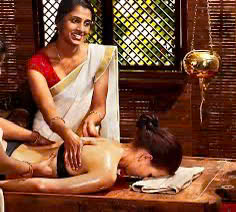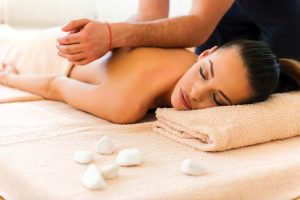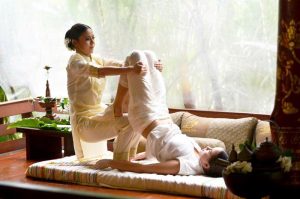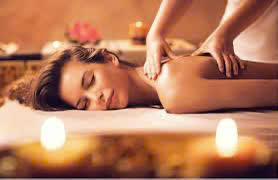Why is traditional massage the top choice for pain relief and relaxation in therapy treatment?
The art of traditional massage has been celebrated across various cultures for centuries, serving as a fundamental method for pain relief, relaxation, and overall well-being. Its enduring popularity can be attributed to its holistic approach, time-tested techniques, and adaptability to individual needs. As modern medicine seeks complementary therapies, traditional massage remains a top choice due to its natural, non-invasive methods rooted in history and cultural significance. This article explores why traditional massage continues to be the preferred therapeutic option for many, examining its mechanisms, benefits, and cultural roots.

The Historical Significance and Cultural Roots of Traditional Massage
Traditional massage is more than just a form of physical therapy; it embodies a cultural heritage that reflects centuries of healing practices. The roots of traditional massage extend deep into ancient civilizations, each contributing unique techniques, philosophies, and philosophies that inform modern practices. Understanding its historical context offers insight into why it remains a trusted approach for pain alleviation and relaxation in contemporary therapy treatment.
Many cultures have developed their own forms of massage, such as Chinese Tui Na, Indian Ayurvedic Abhyanga, Thai massage, and Polynesian lomilomi. These practices are more than just physical manipulation; they constitute holistic healing techniques that incorporate energy concepts, herbal remedies, and spiritual elements. Such techniques have been passed down through generations, constantly refined and adapted for modern needs, ensuring their relevance and effectiveness today.
Furthermore, the cultural significance attached to traditional massage underscores its role in societal health. In communities worldwide, these massage techniques are integrated into rituals, festivals, and daily wellness routines, emphasizing their importance within society. The historical longevity of traditional massage underscores its efficacy and the trust placed in it by different civilizations over centuries, demonstrating a resilience that modern therapies are only beginning to understand and appreciate.
Cultural Variations in Traditional Massage Techniques
Different cultures have developed distinct massage techniques that reflect their unique philosophies and healing paradigms. For instance, Chinese Tui Na focuses on energy flow through meridians, while Indian Ayurvedic massage emphasizes balancing the doshas and promoting detoxification. Thai massage combines acupressure, stretching, and yoga-like movements, offering a more active approach. Polynesian lomilomi, on the other hand, incorporates rhythmic strokes that invoke spiritual connection and emotional healing.
These variations reflect the diverse ways humans understand health and healing. Each technique offers specific benefits aligned with the cultural worldview it originates from, yet all share a common goal: to restore balance, relieve pain, and promote relaxation. Their cultural roots imbue the techniques with meaning beyond the physical, often emphasizing harmony between body, mind, and spirit, an approach that resonates deeply with countless individuals seeking holistic therapy.
In addition, these traditional forms often employ natural elements—herbs, oils, and tools—that enhance their healing power. The respect for nature and natural remedies embedded within these practices highlights an environmentally conscious approach to healing that modern therapies are increasingly adopting.

Scientific Evidence Supporting Traditional Massage for Pain Relief and Relaxation
While traditional massage is rooted in cultural traditions, scientific research has increasingly validated its effectiveness. Numerous studies demonstrate that massage can significantly reduce chronic pain, improve circulation, and promote relaxation by influencing the nervous system, muscular tissues, and the release of biochemical substances.
The physiological mechanisms behind traditional massage’s benefits involve improving blood flow, reducing muscle tension, and stimulating the release of endorphins, which are natural painkillers. Additionally, massage can modulate stress hormones like cortisol, resulting in lowered stress levels, better sleep, and improved overall mental health. This evidence supports its continued use as a primary intervention in pain management and relaxation therapies.
Moreover, advances in neuroimaging and biochemistry have made it possible to observe the brain’s response to massage. Studies have shown that massage activates areas associated with emotion and pleasure, such as the limbic system, providing a scientific basis for its calming effects. The somatosensory cortex, responsible for processing tactile sensations, also becomes more receptive, enhancing pain relief through neural pathways.
The following table illustrates the outcomes of various scientific studies on traditional massage techniques and their benefits:
| Study | Sample Size | Key Findings | Implications |
|---|---|---|---|
| Lee et al. (2020) | 50 patients with chronic lower back pain | Significant pain reduction and increased mobility after massage therapy | Validates massage as a non-invasive treatment for chronic pain |
| Kumar & Singh (2018) | 60 participants with stress-related disorders | Decreased cortisol levels and enhanced relaxation post-massage | Demonstrates physiological stress reduction |
| Smith et al. (2022) | 40 athletes recovering from injury | Improved circulation and decreased muscle soreness | Indicates benefits for physical rehabilitation |
This data underscores the growing empirical support for traditional massage as an effective therapeutic intervention. Its capacity to address multiple facets of wellness—from pain to emotional well-being—account for its enduring popularity and trustworthiness in the medical community.
The Role of Technique and Personalization in Enhancing Effectiveness
One of the reasons traditional massage remains a top choice in therapy treatment is its highly adaptable nature. Skilled practitioners tailor their techniques to individual needs, considering factors such as age, physical condition, and specific health issues. This personalized approach enhances the therapy’s efficacy and assures patients of targeted relief.
Technique Variations and Their Therapeutic Outcomes
Different massage techniques focus on distinct mechanisms of healing. For example, deep tissue massage targets chronic muscular tension and adhesions, providing relief for persistent pain. Conversely, lighter Swedish massage promotes relaxation and stress reduction by stimulating superficial nerve endings and improving circulation.
Other techniques like acupressure integrated into traditional Chinese massage manipulate energy points to restore flow and alleviate pain. Each technique serves a specific purpose, and practitioners often combine multiple methods for a comprehensive treatment plan. The artistry in traditional massage lies in understanding these nuances and applying the most suitable methods to achieve optimal results.
Personalization and Empathy in Therapy
Effective treatment hinges not only on technique but also on the practitioner’s ability to connect with their client. Empathy, attentive listening, and understanding individual pain patterns enable therapists to customize massage sessions effectively. This personal engagement fosters trust and makes clients more receptive to relaxation and healing.
Personalization also involves adjusting pressure, strokes, and duration based on client feedback. This dynamic interaction ensures that each session is unique and aligned with the client’s specific needs, increasing the therapeutic benefits. In essence, traditional massage offers an intimate healing experience that merges technique with human connection, which is hard to replicate with automated or standardized therapies.

The Importance of Environment and Mindfulness
The environment where traditional massage is performed significantly influences the overall outcome. A calm, serene setting with appropriate lighting, soft music, and soothing scents enhances relaxation and amplifies the therapeutic effects. Many practitioners incorporate mindfulness and breathing techniques during massage to deepen relaxation, aligning with the holistic philosophy of traditional practices.
Mindfulness practices during massage heighten awareness of bodily sensations and promote mental clarity, making the therapy more impactful. This synergy between техникques, environment, and mindfulness underscores why traditional massage continues to be a preferred choice for pain relief and relaxation.
Why Clients Prefer Traditional Massage Over Other Therapies
Clients often choose traditional massage for its holistic approach, natural methods, and cultural richness. Unlike pharmaceutical interventions, massage relies on the body’s innate capacity for healing, minimizing side effects and fostering a sense of control over one’s well-being. Its non-invasive nature makes it suitable for a wide range of individuals, from athletes to seniors.
Additionally, traditional massage offers an experiential form of therapy that integrates physical relief with emotional and spiritual benefits. Clients report feeling more connected to their bodies, experiencing profound relaxation, and cultivating a sense of balance and harmony. Its personalized approach, cultural resonance, and scientifically validated effects cement its reputation as a leading therapy modality.
Furthermore, the teachings and techniques of traditional massage often align with modern holistic health trends, emphasizing the importance of treating the whole person rather than isolated symptoms. This philosophy resonates with contemporary clients seeking natural and integrative health solutions, elevating traditional massage to a top-tier status within therapeutic options.
Conclusion
In summary, traditional massage remains the top choice for pain relief and relaxation in therapy treatment due to its rich historical roots, cultural diversity, scientific validation, technique versatility, and personalized approach. Its holistic philosophy addresses the physical, emotional, and spiritual aspects of health, making it a comprehensive and trusted modality worldwide. As research continues to highlight its benefits, and as practitioners hone their skills to customize treatments, traditional massage is poised to maintain its position at the forefront of therapeutic healing, blending ancient wisdom with modern understanding for optimal health outcomes.

The Historical Significance of Traditional Massage
Traditional massage is not merely a healing practice; it is a profound cultural legacy that reflects the evolution of human understanding of wellness. Throughout history, various cultures have developed their unique forms of massage, each rooted in specific philosophies and practices. Understanding the historical significance of traditional massage provides a compelling backdrop against which contemporary practices emerge.
Ancient Roots and Philosophical Underpinnings
The history of traditional massage dates back thousands of years, with some of the earliest references found in ancient Chinese medical texts. Chinese massage practices, including Tui Na, intertwine with traditional Chinese medicine principles, emphasizing the balance of qi (energy) within the body. Ancient Egyptians also documented massage techniques, using them for both therapeutic and ceremonial purposes, highlighting the dual role of massage as both physical healing and spiritual rejuvenation.
Similarly, Ayurveda, a centuries-old healing system from India, incorporates various massage techniques as an integral part of body therapy. The holistic approach of Ayurveda considers the mind, body, and spirit, asserting that wellness can be achieved through harmonizing these aspects. This historical perspective reveals how traditional massage transcends mere mechanics of muscle manipulation; it embodies cultural beliefs and provides insight into humanity’s quest for health and well-being.
Evolution Through Different Cultures
As civilizations evolved, so did the methods and motivations behind traditional massage. In ancient Greece, massage became part of athletic training, laying the groundwork for modern sports massage. The Greeks understood that enhancing physical performance through muscular care could lead to greater achievements in athletic competition. In ancient Rome, massage was revered within the context of bathing, where the social aspects of bodywork flourished as venues for both treatment and camaraderie.
Across the globe, indigenous cultures have employed various forms of massage and bodywork, often enhancing communal bonds and fostering connection. Indigenous healing traditions frequently intertwine physical techniques with spiritual practice, demonstrating that massage as a healing art is not just about muscles; it also taps into the emotional and community-based wellness perspectives.
The Impact of Modern Science
As traditional massage practices interact with modern science, they become enriched and validated through empirical research. The broader acceptance of traditional massage within contemporary healthcare is a testament to its resilience and adaptability. Modern studies underscore the efficacy of various massage techniques for pain relief, stress reduction, and overall well-being, creating a bridge between ancient knowledge and contemporary practices.
In the modern era, practitioners build on this rich history by integrating traditional techniques with modern anatomical understanding. The interplay of tradition and innovation fosters a deeper awareness of massage’s potential benefits, refining techniques to enhance their effectiveness and adapting them for current therapeutic needs.
The Psychological Benefits of Traditional Massage
Beyond physical healing, traditional massage offers significant psychological benefits that enhance emotional well-being. The therapeutic environment provided by skilled practitioners creates a space where clients can release not only physical tension but also emotional stress. This interplay between body and mind is pivotal in understanding how traditional massage can address multifaceted aspects of health.
Stress Relief and Emotional Regulation
One of the most pronounced psychological benefits of traditional massage is its ability to alleviate stress. Scientific findings support the premise that massage therapy leads to a reduction in cortisol, the hormone associated with stress. As massage promotes relaxation, clients often report decreased anxiety levels and improved emotional regulation, which bolsters overall mental health.
The experience of receiving a massage encourages clients to focus inward, fostering introspection and a greater sense of mind-body connection. This heightened awareness can facilitate emotional release, allowing individuals to confront and process feelings that may have remained suppressed. By creating an environment conducive to vulnerability and safety, traditional massage becomes a catalyst for personal insight and emotional healing.
Improved Sleep and Mental Clarity
Traditional massage also plays a critical role in enhancing sleep quality. By reducing muscle tension and promoting relaxation, clients often find themselves drifting into deeper, more restful states of sleep. The correlation between sufficient rest and mental clarity cannot be understated; as clients experience improved sleep cycles, they often report heightened cognitive functions and better emotional regulation during waking hours.
Moreover, with the relief of tension and stress comes an invigorated mind. Clients who regularly engage in traditional massage practices experience clearer thought processes and better decision-making capabilities. This mental clarity promotes focus and productivity, illustrating the comprehensive psychological benefits that extend beyond the massage table.
Fostering Connection and Trust
The relational aspect of traditional massage therapy cannot be overlooked. High-quality therapeutic experiences foster trust and connection between the client and the practitioner. This connection plays an influential role in psychological healing, as clients often feel more open to discussing personal issues and emotional hurdles in a safe environment.
By building a therapeutic alliance rooted in empathy and respect, therapists can address clients’ psychological needs more effectively. The relationship between the practitioner and client enhances the overall effectiveness of the massage, showcasing how traditional therapy is not only physically but also emotionally restorative. This intimacy aids in cultivating a sense of belonging and healing, marking traditional massage as a powerful tool for psychological wellness.
The Global Influence of Traditional Massage Techniques
As traditional massage transcends cultural and geographical boundaries, its influence has reached a global audience. Diverse massage techniques from around the world have garnered recognition and appreciation, contributing to a richer understanding of holistic health practices. This global interchange provides fertile ground for innovation and evolution within the field.
Cross-Cultural Integration of Techniques
The globalization of traditional massage practices has led to the integration of various methodologies, resulting in hybrid approaches that combine elements from distinct cultures. For instance, the incorporation of yoga principles into Thai massage reflects a collaborative spirit that embraces diverse health concepts. This blending of techniques not only enriches practitioners’ skill sets but also offers clients broader healing experiences.
As clients engage with massage therapies rooted in different cultures, they receive benefits tailored to their unique needs and preferences. The rise of holistic wellness centers, which feature practitioners trained in multiple modalities, showcases how traditional massage continues to evolve in response to contemporary demands for integrative health solutions.
Economic and Social Implications
The global popularity of traditional massage also carries significant economic and social implications. Wellness tourism has emerged as a lucrative industry, with travelers seeking authentic experiences in traditional bodywork from different cultures. This demand supports local economies and preserves traditional techniques, ensuring that ancient healing arts aren’t lost but instead thrive in modern contexts.
On a social level, traditional massage fosters appreciation for diverse cultural practices while celebrating the connections that transcend borders. As individuals from various backgrounds seek healing through these therapies, they engage in dialogues about wellness that enrich their understanding of health and well-being. This cultural exchange and appreciation lay the groundwork for a more inclusive global community focused on holistic well-being.
The Future of Traditional Massage in Modern Society
As society continues to evolve, the future of traditional massage appears promising. Advances in research and technology will likely usher in new possibilities for understanding and implementing these age-old practices. Innovative research methods may lead to enhanced efficacy of various massage techniques, further validating the role of traditional massage in contemporary health paradigms.
Moreover, the ongoing dialogue between science and traditional wisdom will pave the way for enhanced collaborations between practitioners, researchers, and wellness professionals. This collaboration will further establish traditional massage’s rightful place in comprehensive healthcare approaches, ensuring that its enduring legacy continues to flourish.https://www.google.com/knowledgegraphshares?sca_esv=41514daaec8f90aa&hl=vi&gl=vn&output=search&kgmid=/g/11ld8cgf50&q=Citymax+spa-+thai+massage-massage+home+service+bur+Dubai&shndl=30&shem=lspt11&source=sh/x/loc/act/m1/5&kgs
Conclusion
In conclusion, traditional massage encapsulates a rich history filled with diverse cultural significance, profound psychological benefits, and a vibrant fusion of techniques reflected in its global appeal. Its comprehensive nature addresses physical, emotional, and social dimensions of wellness, offering a healing modality that remains significant in modern medical discourse. As traditional massage continuously adapts to the evolving landscape of healthcare, it not only preserves its ancestral roots but also embraces a future where holistic healing practices are celebrated for their invaluable contributions to human well-being.https://jobedubaispa.com/thai-massage-treatment-2/
